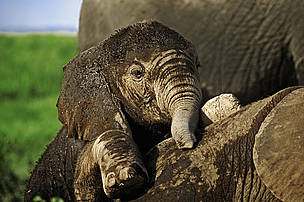| |
|
 |
There is a mass extinction of animals. We caused it. We need to solve it.
October 31, 2016:
 |
 |
 |
The world is facing mass extinction of animals. |
READ ARC'S FAITHS AND WILDLIFE LEAFLET
A report last week revealed a very distressing state of wildlife population decline at a rate similar to mass extinction.
The comprehensive analysis by WWF and the Zoological Society London reports the global animal population declined by 58% between 1970 and 2012 and indicates that by 2020 this is likely to reach 67%.
The main causes are habitat loss, hunting/poaching, and pollution.
The WWF/ZSL report is worth a read to prepare ourselves for strategic interventions.
It says: “Global biodiversity is declining at an alarming rate, putting the survival of other species and our own future at risk. The latest edition of WWF’s Living Planet Report brings home the enormity of the situation - and how we can start to put it right.
The Living Planet Index reveals that global populations of fish, birds, mammals, amphibians and reptiles declined by 58 per cent between 1970 and 2012. We could witness a two-thirds decline in the half-century from 1970 to 2020 – unless we act now to reform our food and energy systems and meet global commitments on addressing climate change, protecting biodiversity and supporting sustainable development.”
Recent faith initiatives to protect wildlife speciesREAD ARC'S FAITHS AND WILDLIFE LEAFLET
Spirituality a key theme in IUCN major international wildlife congress in 2016
Forest burning is a sin, according to a 2016 Indonesian fatwa
Buddhist monks in Zanskar and Ladakh resolve to teach about snow leopard protection
The best "mercy release" is not to eat meat. Chinese Buddhist leaders issue groundbreaking animated feature
New film for Earth Day urging Malaysian Muslims to protect tigers
What Laudato Si says to the world's two billion Catholics about protecting wildlife
Landmark 2014 Indonesian fatwa against killing wildlife
Other LinksAbout Our Earth, WWF, 2016.
IUCN Red List of Threatened Species in which the world’s known species are categorised according to their level of threat.
WWF full report 2016
Summary of the WWF report 2016
Source: The Guardian, Environment
|
 |
 |
|
|
|
|
|

